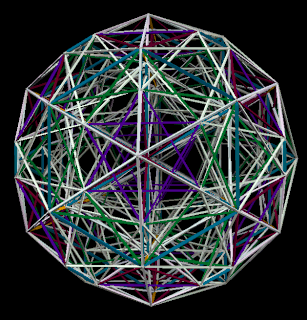

What are 4D shapes? To understand this concept, let's first discuss the process of "projecting" a higher-dimensional object into the dimension below. In this blog post, we'll delve into the fascinating world of 4D shapes and introduce you to the regular convex 4-polytopes: the 5-cell, 8-cell, 16-cell, 24-cell, 120-cell, and 600-cell.

Polytopes are geometric figures with flat faces in any dimension, and they include polygons, polyhedra, and their higher-dimensional counterparts. The world of geometry takes on a new dimension when we venture beyond the 3D shapes we're accustomed to and explore 4D shapes, or polytopes. This email was sent by Adobe Community because you are a registered user."Four-dimensional space is not just an abstract concept, but rather an actual reality that is the natural extension of the three dimensions we are familiar with." - Ludwig Schläfli Start a new discussion in After Effects by email or at Adobe Communityįor more information about maintaining your forum email notifications please go to. To unsubscribe from this thread, please visit the message page at, click "Following" at the top right, & "Stop Following"

If you want to embed an image in your message please visit the thread in the forum and click the camera icon: Please note that the Adobe Forums do not accept email attachments. To post a reply, either reply to this email or visit the message page: Replies to this message go to everyone subscribed to this thread, not directly to the person who posted the message. If the reply above answers your question, please take a moment to mark this answer as correct by visiting: and clicking ‘ Correct’ below the answer
#Classic 4d shapes full
I have never seen a legitimate version of C4D Lite that did not have a full File menu. On Aug 11, 2019, at 9:29 AM, Rick Gerard wrote:Ĭinema 4D shape extrusion + Ray Traced effects in logo? created by Rick Gerard in After Effects - View the full discussion The render times are also significantly faster for most systems. You can do the extrusions in C4D lite, you'll have more control and there are a bunch more rendering and texturing options available than you have trying to extrude layers in After Effects. You might also want to consider creating the project without extrusions using the Classic rendering engine, then export the comp to a C4D file. The files are just a little more difficult to deal with but if anything goes wrong with the render or you need to fix 10 frames it's a lot better workflow. I would strongly recommend that you render to an image sequence so if something causes a render failure you can pick up from the last good frame instead of having to render the whole project again. Once you complete your render you will use the Adobe Media Encoder to render your DI to a delivery format like h.264. Make sure you use a visually lossless format. With both the C4D and Ray-traced rendering engine you are going to want to render a digital intermediate using AE's Render Cue.

The Ray-traced rendering engine is also not as stable as it should be. You should be aware that the Ray-traced rendering engine is deprecated and no longer being worked on by Adobe.


 0 kommentar(er)
0 kommentar(er)
